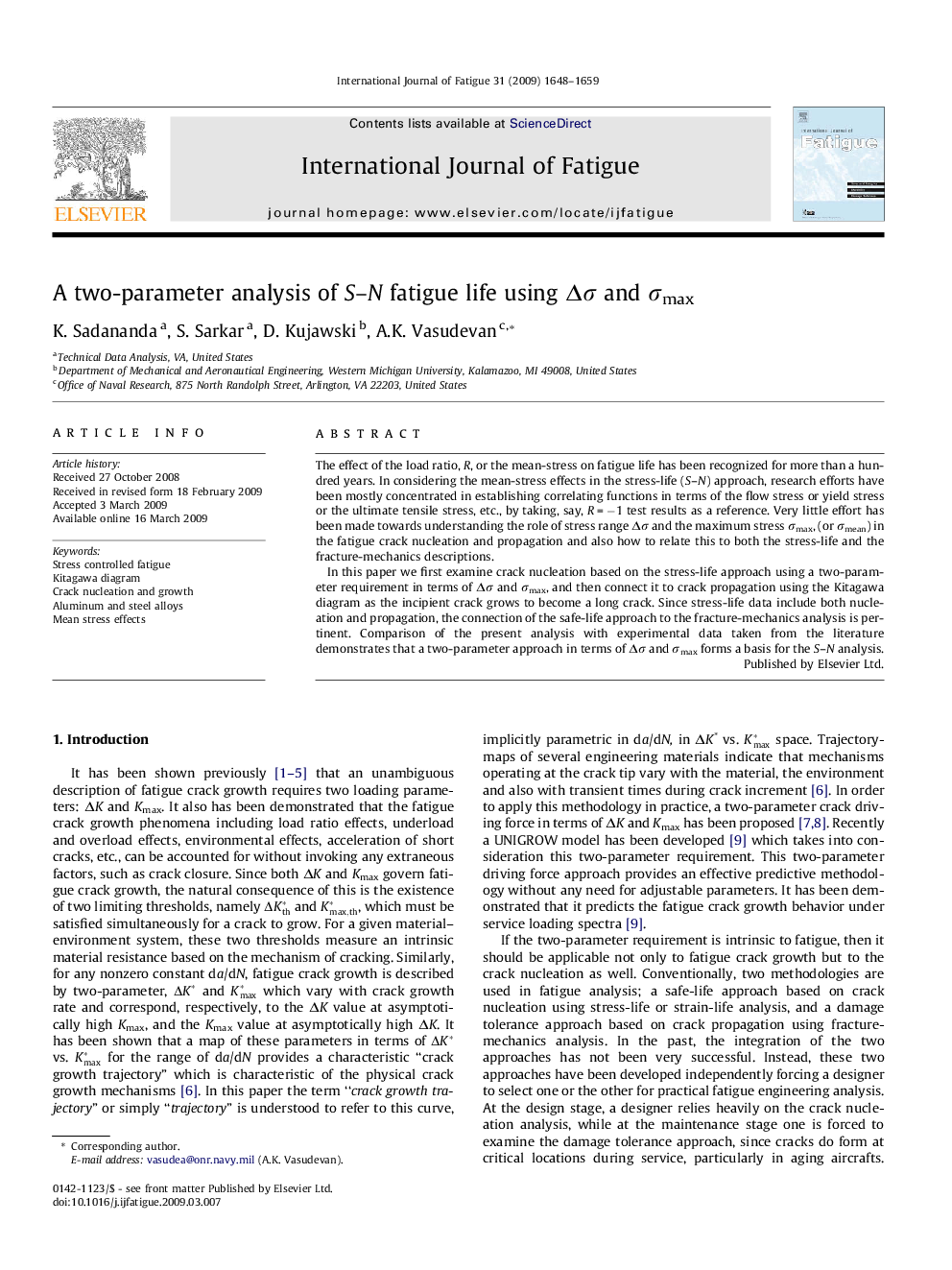| Article ID | Journal | Published Year | Pages | File Type |
|---|---|---|---|---|
| 775637 | International Journal of Fatigue | 2009 | 12 Pages |
The effect of the load ratio, R, or the mean-stress on fatigue life has been recognized for more than a hundred years. In considering the mean-stress effects in the stress-life (S–N) approach, research efforts have been mostly concentrated in establishing correlating functions in terms of the flow stress or yield stress or the ultimate tensile stress, etc., by taking, say, R = −1 test results as a reference. Very little effort has been made towards understanding the role of stress range Δσ and the maximum stress σmax, (or σmean) in the fatigue crack nucleation and propagation and also how to relate this to both the stress-life and the fracture-mechanics descriptions.In this paper we first examine crack nucleation based on the stress-life approach using a two-parameter requirement in terms of Δσ and σmax, and then connect it to crack propagation using the Kitagawa diagram as the incipient crack grows to become a long crack. Since stress-life data include both nucleation and propagation, the connection of the safe-life approach to the fracture-mechanics analysis is pertinent. Comparison of the present analysis with experimental data taken from the literature demonstrates that a two-parameter approach in terms of Δσ and σmax forms a basis for the S–N analysis.
